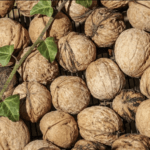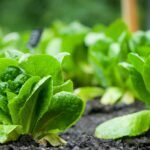Sage is a versatile herb that is easy to grow in most gardens. If you wish to enjoy fresh sage right from the garden, you need to learn how to harvest sage and other proper harvesting practices, tips, and tricks.
Sage is a resourceful herb; while it looks nice in beds, you can also harvest dried, fresh, or frozen leaves. If growing to use in the kitchen, know when to pick sage and harvest it for the best results.
Though it may seem a little intimidating initially, especially if you are new to growing your herbs, you have nothing to worry about. Harvesting is a fairly simple process. However, there are key steps and guidelines you ought to master; and before you know it, you’ll soon become a pro at how to harvest sage.
How to Harvest Sage
Harvesting sage depends on how and when you wish to use your leaves.
To harvest sage leaves.
- Pinch-out tips or individual leaves from a couple of sage plants are absolutely fine.
These light cut-and-come-again harvests will encourage sage plants to branch, resulting in a fuller, bushier shrub.
To harvest large quantities of sage.
- Using clean, sterilized pruners or scissors, harvest only up to a third of a growing sage plant at any one time to allow plants to rejuvenate for future harvests.
- A mature sage plant should provide up to three full harvests in a season.
- Never cut into old wood, as the plant will not produce leaves from this point in the future, and harsh cuts leave shrubs susceptible to disease and the elements.
Recommended Product: VIVOSUN Gardening Hand Pruner
[amazon box=”B01EWH83FU” class=”lp-product-list” template=”vertical” image_size=”large” title=” ” image_alt=”alttexthere” description=”none” price=”none” button_text=”Check Latest Price” ]
These micro-tip snips are built spring-loaded to automatically push themselves open without you having to do the work, which greatly reduces hand fatigue, making these snips great for those with arthritis, carpal tunnel, or hand or wrist issues.
Comfort Grip handles will make it easy to work for long periods without discomfort. These quality snips come with stainless steel precision-sharpened blades. They are ready to tackle your deadheading, trimming, and shaping needs for your roses, annuals, vegetables, bonsai, and small flower gardens.
Features:
- Stainless Steel
- Sideways locking mechanism
- Comfort Grip handles
How do you harvest sage without killing the plant?
As tempting as it may be, do not harvest from young plants in their first year. This includes sage grown from seed or small immature shop-bought plants. Allow the roots to become established.
Harvest sage in spring and summer when plants are actively growing and before they begin to flower.
If you need sage leaves for a winter holiday meal, harvesting a few leaves at a time won’t harm the plant if you are careful.
How do you know when sage is ready to harvest?
Sage plants are ready to harvest at least one year old and have lots of healthy new growth. For best flavor, harvest leaves in spring and summer before the plant flowers.
How do you harvest fresh sage leaves?
Cut an entire stem if desired, or pinch a leaf at a time. To give new foliage time to fully mature, leave two months between your last big harvest and the first frost of the season—dry harvested sage by hanging bunches of stems upside-down. Strip the dry leaves from the stem and store them in an airtight container.
Where do you cut sage when harvesting?
After flowering, sage leaves lose some of their aroma and flavor. You can pick individual leaves as you need them, leaving the rest of the plant intact. For a larger harvest, cut back an entire stem to the base of the plant, then strip off the leaves.
When to harvest and not to harvest sage?
In fall, stop harvesting and allow the plant to rest and prepare for the winter months ahead. The best time to harvest sage is mid-morning once the dew has dried from the leaves and the leaves are still hydrated. Avoid harvesting during hot periods, as the herbs will deteriorate quickly in the heat.
How to store fresh sage?
Store in the fridge
- Stems of sage can be stored in jars of fresh water on the countertop for up to a week or in the refrigerator for 7-10 days.
- Change the water every few days and look over the leaf daily for any yellowing or mold developing, which are signs that they’re past their best use. Wash your sage before use.
Recommended Product: Cold Glass Water Pitcher
[amazon box=”B010H45KHQ” class=”lp-product-list” template=”vertical” image_size=”large” title=” ” image_alt=”alttexthere” description=”none” price=”none” button_text=”Check Latest Price” ]
This carafe is made of premium borosilicate glass. It is capable of temperatures from 0 to 300℉, meaning you can pour boiling water from the tea kettle directly into the carafe to steep tea and coffee with no worries.
Also, you can put it in the fridge for storing and cold brewing. It is totally safe and healthy with no lead, BPA, and no plastic, and it is dishwasher safe. The movable lid is made of stainless steel with silicone and no plastic.
Features:
- Stainless steel lid
- Borosilicate glass
- 50 Fluid Ounces
Store in freezer
You can store sage in the freezer in different ways.
- Lay whole leaves on a tray and place the tray into the freezer. Once frozen, put all leaves into a freezer bag and store them in the freezer until needed.
- Fill ice cube trays with finely chopped sage. Top the trays with water and freeze. When frozen, remove the sage ice cubes from the trays and store them in a tub or bag in the freezer until ready to use.
Recommended Product: Food Storage Bags
[amazon box=”B07Q1DBZR9″ class=”lp-product-list” template=”vertical” image_size=”large” title=” ” image_alt=”alttexthere” description=”none” price=”none” button_text=”Check Latest Price” ]
Get unbeatable freshness with new Grip ‘n Seal technology and Smart Zip Plus Seal. Its triple system seal features an extended tab, new, easy-grip texture, and a double zipper.
Ziploc brand Storage Bags are perfect for food storage, including meat, fish, and chicken in the refrigerator.
Features:
- BPA-free plastic
- Durable
- Long-lasting
Recommended Product: Ice Cube Trays with Lids
[amazon box=”B07QQTNTKZ” class=”lp-product-list” template=”vertical” image_size=”large” title=” ” image_alt=”alttexthere” description=”none” price=”none” button_text=”Check Latest Price” ]
Ice tray made of food-grade silicone, keep your ice safe for drinking. These Ice cubes can be used for adult and baby food, are also safe for use in the freezer, oven, dishwasher, refrigerator, and microwave.
Comes with a removable lid, these easy-release trays stack easily and neatly in the freezer without sticking. The flexible silicone material shapes the bottom well, make it easy to release ice cubes.
Features:
- Easy to clean
- Reusable
- Non-stick surface
Additional Tips on How to Harvest Sage
- Sage can be harvested almost any time, but you’ll get the best flavor when you pick leaves before the plant blooms.
- You can extend harvesting by picking off flowers as the buds develop, but it is also possible to harvest as the plants are blooming and after.
- As you harvest, be sure to leave a few stalks alone so that the plant can recover. Limit fall and winter harvesting to allow plants to get ready to come back strong in the spring.
- Avoid harvesting leaves from sage plants in their first year is not a bad idea. This allows the plant to establish good roots and a solid frame.
- When picking sage herbs, consider whether you’ll use them fresh or hang them to dry.
- You can harvest and use both young and mature sage leaves, but remember that the baby leaves will have a better flavor.
How To Harvest Sage Tutorial Video
We believe you will also be interested in learning how to Harvest Oregano. Let us know what other fruit, vegetable, or plant you’d like to harvest next time!



